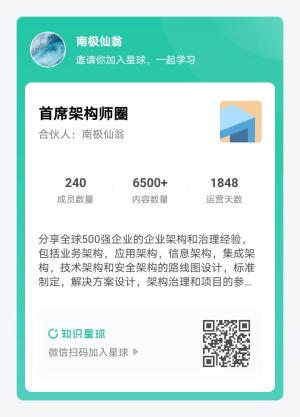category
前言
我听说开发人员不想接受MongoDB是他们操作数据库的可行选择的原因之一是PostgreSQL的JSON支持非常好,没有理由另谋高就。我经常对此感到好奇,并决定为了真正建立任何意见,我需要卷起袖子参与进来。
在这一系列的文章中,我将研究Postgres基于JSON的特定功能(我还不太熟悉),并将它们与MongoDB的JSON功能进行比较(鉴于我在那里的工作,我应该非常了解这些功能)。我希望能学到很多关于Postgres的知识,以及如何使用它,最终形成我自己的观点:现在Postgres支持JSON,还需要MongoDB吗?
我不会把Postgres看作一个RDBMS。对于那些真正想使用20世纪70年代制定的模式对数据进行建模的人来说,Postgres是一个不错的选择。如果你只想通过外键来建模你的关系,并且不介意通过一些脆弱的ORM将所有结果重新映射到JSON中,那么作为我的客人,Postgres无疑是最适合你的RDBMS。
然而,与许多现代开发人员一样,如果您认识到高效构建应用程序和服务需要使用一个存储层,该存储层可以按照我们想要的方式存储数据,那么MongoDB与Postgres的JSONb支持问题是非常有先见之明的。
花了很多时间研究这些帖子,阅读关于JSONb的问题和评论页面,我在Postgres留言板和论坛上一次又一次地看到一个问题出现:“为什么我不应该把所有数据都存储在一个JSONb专栏中?”。如果你熟悉MongoDB,这个问题会让你大吃一惊。
让我们开始吧。
第一部分。基本查询。
在我写这篇文章的时候,这是英国一个温暖晴朗的日子,我坐在郊区小花园的一张桌子旁。我们将首先构建一些在PGJSONb中使用JSON数据的快速示例,然后在MongoDB中比较相同的内容。
对于PG:
create table plants (
id serial not null primary key,
plant jsonb not null
);
insert into plants values (1,'{"name": "Sweet Pea", "currentHeightCM": 82, "maxHeightCM":120, "tags": ["scented", "climber"]}');
insert into plants values (2,'{"name": "Sunflower", "currentHeightCM": 24, "maxHeightCM":240, "tags": ["fast growing", "tall", "phototropic"]}');
你会期望在MongoDB中同样的事情会更容易,当然,作为一个原生的JSON文档(对象)存储,它确实如此。
db.plants.insert({"name": "Sweet Pea", "currentHeightCM": 82, "maxHeightCM":120, "tags": ["scented", "climber"]})
db.plants.insert({"name": "Sunflower", "currentHeightCM": 24, "maxHeightCM":240, "tags": ["fast growing", "tall", "phototropic"]})
您不需要任何创建表定义(一个模式),Postgres定义中的id字段被MongoDB中自动生成的名为_id的objectID所取代。
让我们把这两条记录都拉回来,检查一下它们是否像预期的那样。
jim=# SELECT * FROM plants;
id | plant
----+-------------------------------------------------------------------------------------------------------------------
1 | {"name": "Sweet Pea", "tags": ["scented", "climber"], "maxHeightCM": 120, "currentHeightCM": 82}
2 | {"name": "Sunflower", "tags": ["fast growing", "tall", "phototropic"], "maxHeightCM": 240, "currentHeightCM": 24}
(2 rows)
jim=#
garden> db.plants.find()
[
{
_id: ObjectId("62add6426e4370b84d1ff2ef"),
name: 'Sweet Pea',
currentHeightCM: 82,
maxHeightCM: 120,
tags: [ 'scented', 'climber' ]
},
{
_id: ObjectId("62ade2dccc74a951c921497b"),
name: 'Sunflower',
currentHeightCM: 24,
maxHeightCM: 240,
tags: [ 'fast growing', 'tall', 'phototropic' ]
}
]
garden>
通过属性查找文档也相当容易。对于MongoDB来说,它只是:
garden> db.plants.find({"name":"Sunflower"})
[
{
_id: ObjectId("62ade2dccc74a951c921497b"),
name: 'Sunflower',
currentHeightCM: 24,
maxHeightCM: 240,
tags: [ 'fast growing', 'tall', 'phototropic' ]
}
]
garden>
在Postgres中,它仍然是非常基本的东西,尽管因为SQL不是用JSON构建的,所以我们必须引入几个新的操作符之一来处理JSON数据。(附带说明,JSON最近被添加到SQL:2016标准中作为模型,然后更新为SQL:2019作为数据类型,如本文所述,尽管我认为SQL:2019实际上还不存在)
在这种情况下,我们将使用包含运算符@>,它询问短语是否包含在JSONb字段中。这个操作符很有趣,因为它似乎只存在于Postgres中,所以您创建的任何使用它的SQL都不能在MySQL上运行。在这个博客的上下文中,这并不是什么大不了的事情,但我觉得奇怪的是,SQL标准定义了JSON的存储方式,但每个DB都有自己的查询方式。比这个更了解情况的博客也建议在这里使用GIN索引,因为事情变得非常慢,非常快。
jim=# SELECT * FROM plants WHERE plant @> '{"name": "Sunflower"}';
id | plant
----+-------------------------------------------------------------------------------------------------------------------
2 | {"name": "Sunflower", "tags": ["fast growing", "tall", "phototropic"], "maxHeightCM": 240, "currentHeightCM": 24}
(1 row)
好了,我们不需要花了,让我们看看一些树。我的花园很小,但我设法进了不少,我喜欢它们带来的结构和高度。我可以使用JSON轻松地描述树木,而不是复制每棵树的信息,我可以描述一种类型的树,然后在我的花园周围嵌入该树的实例数组。例如,我有三棵苹果树(虽然只有一棵是真正的大树,但今年我靠着栅栏种了另外两棵,它们很小)。我有一个JSON对象,它描述了我需要了解的关于苹果树的信息,它们有多大,它们的花(花)的颜色和结出的果实。
这个对象中嵌入了一组子对象,这些子对象描述了这棵树在我的花园中的每个实例的位置、它的健康程度以及它的大小
{
name: 'Corkscrew Willow',
species: 'Salix matsudana Tortuosa',
flowerColor: 'Yellow Catkins',
maxHeightCM: 1200,
instance: [
{
location: 'left fence',
currentHeightCM: 400,
health: 'vigorous'
},
{
location: 'left fence',
currentHeightCM: 420,
health: 'vigorous'
}
],
tags: [ 'tree', 'twisted' ]
}
这种类型的数据建模仍然是非规范化的,但关系建模的爱好者会认为,我可以将实例放入一个单独的表中,并在查询时将它们重新连接在一起。
是的,我可以,但为什么?JOIN很昂贵,ORM很脆弱,需要维护。我更愿意在我的应用程序将使用数据的状态下将数据返回到我的API,而数据库所做的工作量最小。(尽管我承认将API绑定到DB的模式从来都不是一个好主意,但它适用于本例。)
因此,这是我们将加载到数据库中的内容(我们将首先删除以前的数据):
db.plants.drop()
db.plants.insertMany([
{"name":"Apple Tree","species":"Malus domestica","flowerColor":"White","maxHeightCM":500,"fruit":{"color":"green","avSizeCM":10,"taste":"sweet"},"instance":[{"location":"right fence","currentHeightCM":83,"health":"good"},{"location":"right fence","currentHeightCM":65,"health":"poor"},{"location":"back left corner","currentHeightCM":450,"health":"vigorous"}],"tags":["tree","fruiting","slow growing"]},
{"name":"Wild Cherry","species":"Prunus avium","flowerColor":"Pink","maxHeightCM":3000,"fruit":{"color":"red","avSizeCM":2,"taste":"sour"},"instance":[{"location":"next to decking","currentHeightCM":600,"health":"vigorous"}],"tags":["tree","fruiting"]},
{"name":"Silver Birch","species":"Betula pendula","flowerColor":"Yellow Catkins","maxHeightCM":3100,"instance":[{"location":"next to decking","currentHeightCM":140,"health":"good"}],"tags":["tree"]},
{"name":"Rowan","species":"Sorbus aucuparia","flowerColor":"White","maxHeightCM":1500,"fruit":{"color":"red","avSizeCM":0.5,"taste":"inedible"},"instance":[{"location":"back door","currentHeightCM":400,"health":"good"}],"tags":["tree","Ward Off Evil Spirits"]},
{"name":"Olive","species":"Olea europaea","flowerColor":"White","maxHeightCM":1500,"fruit":{"color":"green","avSizeCM":1.5,"taste":"sweet"},"instance":[{"location":"back door","currentHeightCM":450,"health":"good"}],"tags":["tree","Mediterranean"]},
{"name":"Corkscrew Willow","species":"Salix matsudana Tortuosa","flowerColor":"Yellow Catkins","maxHeightCM":1200,"instance":[{"location":"left fence","currentHeightCM":400,"health":"vigorous"},{"location":"left fence","currentHeightCM":420,"health":"vigorous"}],"tags":["tree","twisted"]},
])
Postgres不太容易插入多个JSONb对象,StackOverflow认为*如果插入的次数不多,性能就会出现问题。人们认为,最好的方法是创建一个临时表,将JSON的原始文本加载到其中,然后作为第二步将其解析为所需的表/状态。在我们的情况下,我们可以直接这样做,因为我们只有六条记录。(*公平地说,SO关心的可能更多的是将JSON批量解析为非JSON结构)
TRUNCATE plants;
INSERT INTO plants (plant)
SELECT * FROM json_array_elements ('[
{"name":"Apple Tree","species":"Malus domestica","flowerColor":"White","maxHeightCM":500,"fruit":{"color":"green","avSizeCM":10,"taste":"sweet"},"instance":[{"location":"right fence","currentHeightCM":83,"health":"good"},{"location":"right fence","currentHeightCM":65,"health":"poor"},{"location":"back left corner","currentHeightCM":450,"health":"vigorous"}],"tags":["tree","fruiting","slow growing"]},
{"name":"Wild Cherry","species":"Prunus avium","flowerColor":"Pink","maxHeightCM":3000,"fruit":{"color":"red","avSizeCM":2,"taste":"sour"},"instance":[{"location":"next to decking","currentHeightCM":600,"health":"vigorous"}],"tags":["tree","fruiting"]},
{"name":"Silver Birch","species":"Betula pendula","flowerColor":"Yellow Catkins","maxHeightCM":3100,"instance":[{"location":"next to decking","currentHeightCM":140,"health":"good"}],"tags":["tree"]},
{"name":"Rowan","species":"Sorbus aucuparia","flowerColor":"White","maxHeightCM":1500,"fruit":{"color":"red","avSizeCM":0.5,"taste":"inedible"},"instance":[{"location":"back door","currentHeightCM":400,"health":"good"}],"tags":["tree","Ward Off Evil Spirits"]},
{"name":"Olive","species":"Olea europaea","flowerColor":"White","maxHeightCM":1500,"fruit":{"color":"green","avSizeCM":1.5,"taste":"sweet"},"instance":[{"location":"back door","currentHeightCM":450,"health":"good"}],"tags":["tree","Mediterranean"]},
{"name":"Corkscrew Willow","species":"Salix matsudana Tortuosa","flowerColor":"Yellow Catkins","maxHeightCM":1200,"instance":[{"location":"left fence","currentHeightCM":400,"health":"vigorous"},{"location":"left fence","currentHeightCM":420,"health":"vigorous"}],"tags":["tree","twisted"]}
]');
让我们做一些非常简单的查询。
- 我有多少棵树?
- 哪些类型的树开白花?
- 哪些树结出甜美的果实
- 我花园里哪棵树最高?
- 我有多少棵超过2米高的树?
我有多少棵树?
如果我想知道我有多少类型的树,也就是行的数量,这可能是一个非常简单的查询。但是,我想知道我总共有多少棵树,所以我需要计算实例数组的所有元素。
事实上这是MongoDB中一个非常简单的操作,因为它是为这类工作从头开始设计的。
db.plants.aggregate([
{$unwind: {path: '$instance'}},
{$count: 'TreeCount'}
])
我们首先展开数组,将元素打开到它们自己的文档中,然后计算所有结果。
[ { TreeCount: 9 } ]
对于Postgres来说,过程是不同的…
SELECT SUM(jsonb_array_length(plant -> 'instance')) FROM plants;
或者,有人建议我,这也会起作用…
SELECT COUNT(plant) FROM plants AS s, jsonb_array_elements(s.plant ->'instance') AS t;
如果你不知道PostgresJSONb操作符,那么解释这里发生了什么就有点困难了,但这里的关键是用于提取JSON对象的->操作符。
两个选项都给出了正确的结果:
sum ----- 9 (1 row)
哪些类型的树开白花?
这对两个平台来说都是另一个简单的操作,对于Postgres,我们使用@>包含运算符,它看起来与左侧选择中运算符右侧的JSON匹配。
SELECT plant['name'] FROM plants WHERE plant @> '{"flowerColor":"White"}';plant
--------------
"Apple Tree"
"Rowan"
"Olive"
(3 rows)
此查询中使用了MongoDB的find()运算符。
db.plants.find({'flowerColor': 'White'},{_id:0,name:1})[
{ name: 'Apple Tree' },
{ name: 'Rowan' },
{ name: 'Olive' }
]
在上面的MongoDB查询中,我还包含了一个投影参数{_id:0,name:1},它禁止在结果集中返回_id字段,包含name:1意味着我将传入一个我确实希望返回的字段列表,在本例中仅返回name。它完全是可选的,省略它以返回完整的文档。
哪些树结出甜美的果实?
这是一个有趣的问题,因为我花园里的一些树根本没有结果,所以JSON对象不包含水果字段。这对MongoDB来说不是问题,查询再简单不过了…
db.plants.find({'fruit.taste': 'sweet'},{_id:0,name:1})[
{ name: 'Apple Tree' },
{ name: 'Olive' }
]
在这里,我们正在做一个简单的查找,其余的由MongoDB完成,它不担心某些文档中没有水果对象,而且无论嵌套有多深,都可以很容易地使用嵌套对象。
然而,Postgres的情况就不同了。我承认我不是Postgres的超级明星,但我的SQL并不太生疏。我应该能够做到这一点…
首先,我尝试了类似于MongoDB的查询,我认为它会起作用,因为它看起来很合乎逻辑…
SELECT * FROM plants WHERE plant @> '{"fruit.taste": "sweet"}';
这应该有效,它被要求返回包含{"fruit.taste": "sweet"}的所有行,有趣的是,它没有出错,只是返回(0行)
啊,也许Postgres不理解JSONb嵌套上下文中的点表示法,这很公平。
SELECT * FROM plants WHERE plant @> '{"taste": "sweet"}';
{"taste":"sweet"} 必须包含在JSONb结构中的某个位置,对吗?nope,(0行)
好吧,也许它不是递归的,它需要指向子对象中属性的位置,但我们不能,因为有些行根本没有水果子对象!
然后我发现了一个著名的Postgres支持团队的博客文章,其中介绍了各种紧密的解决方案。他们提出的一个选项是将JSONb转换为文本,然后再转换回JSON,这似乎是一个非常冗长的选项…
select id, t.* from plants, jsonb_to_recordset((plant->>'fruit'::text)::jsonb) as t(color text,taste varChar(100), avSizeCM text) where taste like 'sweet';
这对我来说仍然不起作用。他们在博客文章中提供的其他选项真的很复杂,而且他们自己也承认,性能不好,使用了生成的列和表达式索引以及其他我不完全理解的东西。
最后,在r/postgreSQL中四处询问后,我找到了一条与许多Postgres爱好者流行的不和通道。我解释了这个问题,值得赞扬的是,他们像对待公牛一样接受了挑战。过了一段时间,解决方案发布了!
with fruit_cte as ( select plant->>'name' as name, plant->'fruit' as fruit from plants ) select name,fruit->>'taste' as taste from fruit_cte where fruit->>'taste' = 'sweet'; name | taste ------------+------- Apple Tree | sweet Olive | sweet (2 rows)
(好吧,我知道橄榄不是很甜,但它们也不酸,我正在制作这个数据集,所以不要根据我的水果定义来挑剔我!)
我们终于到了!我花了两天的时间进行实验,尝试不同的东西,用头撞墙,才放弃。即使是前面提到的备受尊敬的专业支持团队也找不到这个解决方案,这取决于一些非常有才华的以社区为导向的人,他们喜欢解决棘手的挑战,能够不假思索地在MongoDB中完成一些事情。
我花园里哪棵树最高?
我花园里最高的树不是maxHeightCM最高的树,而是instance.currentHightCM最高的树。
在MongoDB中实现这一点的一种方法是使用聚合管道,像这样的查询显示了它是多么容易使用。(如果你想看看它有多神奇,请查看@thedonester的权威文本)
db.plants.aggregate([
{$unwind: {path: "$instance"}},
{$sort: {"instance.currentHeightCM" :-1}},
{$limit: 1},
{$project: {
_id:0,
name:1,
"location":"$instance.location",
"height":"$instance.currentHeightCM"
}}
])
聚合由多个阶段组成,第一阶段的输出通过管道连接到第二阶段的输入
第一个阶段是展开,这是处理数组的一个非常方便的工具,因为它允许您将数组分解并为每个元素创建一个单独的文档。
接下来,我们对数组进行排序,在limit阶段之前,它只返回一个文档。
最后,我将在项目阶段运行结果集,以重塑数据。这是可选的,但如果不打算使用所有原始文档,您可能不希望将其返回到应用程序。
您还将注意到,我已经使用投影阶段重命名了几个属性,这只是为了可读性。
它会产生正确的结果:
[{ name: 'Wild Cherry', location: 'next to decking', height: 600 }]
还有其他方法可以做到这一点,有些甚至更简单,它们不使用聚合框架,但这个例子很好地介绍了使用管道进行处理的能力。
我们如何在Postgres中做到这一点?第一项工作是列出所有的树。
SELECT plant->>'name' AS name, plant->'instance' AS instance FROM plants
输出如下所示:
name | instance
------------------+------------------------------------------------------------------------------------------------------------------------------------------------------------------------------------------------------------------------------
Apple Tree | [{"health": "good", "location": "right fence", "currentHeightCM": 83}, {"health": "poor", "location": "right fence", "currentHeightCM": 65}, {"health": "vigorous", "location": "back left corner", "currentHeightCM": 450}]
Wild Cherry | [{"health": "vigorous", "location": "next to decking", "currentHeightCM": 600}]
Silver Birch | [{"health": "good", "location": "next to decking", "currentHeightCM": 140}]
Rowan | [{"health": "good", "location": "back door", "currentHeightCM": 400}]
Olive | [{"health": "good", "location": "back door", "currentHeightCM": 450}]
Corkscrew Willow | [{"health": "vigorous", "location": "left fence", "currentHeightCM": 400}, {"health": "vigorous", "location": "left fence", "currentHeightCM": 420}]
(6 rows)
在下一阶段,我大量借鉴了上面关于甜水果的例子。如果没有乐于助人的Postgres社区的支持,我不可能做到这一点
现在,我们需要在该结果集上运行SELECT,但使用一个名为jsonb_to_recordset()的新(对我们来说)运算符,该运算符会分解数组并为每个数组元素创建一行。它相当于Postgres的MongoDB的$unver,但是,对于Postgres,您必须使用AS条件显式地强制转换jsonb_to_recordset()的输出。
with instance_cte as ( SELECT plant->>'name' AS name, plant->'instance' AS instance FROM plants ) SELECT * FROM instance_cte, jsonb_to_recordset(instance_cte.instance) AS items(health jsonb, location jsonb, currentHeightCM jsonb);
我们还没到。结果集如下所示:
name | instance | health | location | currentheightcm
------------------+------------------------------------------------------------------------------------------------------------------------------------------------------------------------------------------------------------------------------+------------+--------------------+-----------------
Apple Tree | [{"health": "good", "location": "right fence", "currentHeightCM": 83}, {"health": "poor", "location": "right fence", "currentHeightCM": 65}, {"health": "vigorous", "location": "back left corner", "currentHeightCM": 450}] | "good" | "right fence" |
Apple Tree | [{"health": "good", "location": "right fence", "currentHeightCM": 83}, {"health": "poor", "location": "right fence", "currentHeightCM": 65}, {"health": "vigorous", "location": "back left corner", "currentHeightCM": 450}] | "poor" | "right fence" |
Apple Tree | [{"health": "good", "location": "right fence", "currentHeightCM": 83}, {"health": "poor", "location": "right fence", "currentHeightCM": 65}, {"health": "vigorous", "location": "back left corner", "currentHeightCM": 450}] | "vigorous" | "back left corner" |
Wild Cherry | [{"health": "vigorous", "location": "next to decking", "currentHeightCM": 600}] | "vigorous" | "next to decking" |
Silver Birch | [{"health": "good", "location": "next to decking", "currentHeightCM": 140}] | "good" | "next to decking" |
Rowan | [{"health": "good", "location": "back door", "currentHeightCM": 400}] | "good" | "back door" |
Olive | [{"health": "good", "location": "back door", "currentHeightCM": 450}] | "good" | "back door" |
Corkscrew Willow | [{"health": "vigorous", "location": "left fence", "currentHeightCM": 400}, {"health": "vigorous", "location": "left fence", "currentHeightCM": 420}] | "vigorous" | "left fence" |
Corkscrew Willow | [{"health": "vigorous", "location": "left fence", "currentHeightCM": 400}, {"health": "vigorous", "location": "left fence", "currentHeightCM": 420}] | "vigorous" | "left fence" |
(9 rows)
它返回的信息比我们实际需要的要多得多,所以我们将在下一步进行投影,但至少每个实例有一行,而不是每棵树有一行。
但有些可疑的事情正在发生,如果你看看在最右边专栏,对于currentHeightCM来说,它是空的,这是一个遗憾,因为它是我们将需要的。我们也必须解决这个问题。
让我们把我们不想要的东西都投射出来。
with instance_cte as ( SELECT plant->>'name' AS name, plant->'instance' AS instance FROM plants ) SELECT instance_cte.name, items.location, items.currentheightcm FROM instance_cte, jsonb_to_recordset(instance_cte.instance) AS items(location jsonb, currentHeightCM jsonb);
now we are being more explicit about what we want to return, we can see the problem clearly.
name | location | currentheightcm ------------------+--------------------+----------------- Apple Tree | "right fence" | Apple Tree | "right fence" | Apple Tree | "back left corner" | Wild Cherry | "next to decking" | Silver Birch | "next to decking" | Rowan | "back door" | Olive | "back door" | Corkscrew Willow | "left fence" | Corkscrew Willow | "left fence" | (9 rows)
currentHeightCM出了什么问题?它是子对象中唯一一个int而不是text的字段,但这不可能是问题所在(我试着将其转换为int,但仍然不起作用)。
几个小时过去了。
为什么它将结果集中的列名转换为小写?不,等等,这是我写为Lower Camel Case的唯一属性名称。不可能,那太疯狂了。为什么Postgres的属性名称必须全部小写?为了确定起见,我最好测试一下。
我创建了一个名为plants3的新表,并插入了与以前相同的数据,但将所有对currentHeightCM的引用都更改为currentHeightCM,然后重新运行与上面完全相同的查询。
name | location | currentheightcm
------------------+--------------------+-----------------
Apple Tree | "right fence" | 83
Apple Tree | "right fence" | 65
Apple Tree | "back left corner" | 450
Wild Cherry | "next to decking" | 600
Silver Birch | "next to decking" | 140
Rowan | "back door" | 400
Olive | "back door" | 450
Corkscrew Willow | "left fence" | 400
Corkscrew Willow | "left fence" | 420
(9 rows)
这正是使用连接到RDBMS上的一个好主意(JSONb)来处理这种工作负载的问题。无论你认为数据建模的灵活性有多大,总会有一些令人讨厌的陷阱潜伏在那里,作为关系模式僵化的后遗症。
我后来发现了一份关于这个主题的错误报告,报告者建议他们不能将camelCase与jsonb_to_recordSet()一起使用,然而,受访者认为这是故意的行为…。
未引用的标识符在postgres中用小写字母表示
在我们因沮丧而死之前,让我们先完成剩下的查询。
我需要ORDERBY和LIMIT来匹配MongoDB的输出。
with instance_cte as ( SELECT plant->>'name' AS name, plant->'instance' AS instance FROM plants3 ) SELECT instance_cte.name, items.location, items.currentheightcm FROM instance_cte, jsonb_to_recordset(instance_cte.instance) AS items(location jsonb, currentheightcm jsonb) ORDER BY items.currentheightcm DESC LIMIT 1;
and at last…
name | location | currentheightcm -------------+-------------------+----------------- Wild Cherry | "next to decking" | 600 (1 row)
我本应该将高度强制转换为int,但我很高兴看到Postgres仍然可以对其进行排序,即使它被强制转换为JSONb。对于下一个查询,我肯定要这样做。此外,我不确定为什么location是唯一一个用双引号括起来的字段。
我有多少棵超过2米高的树?
这里的计划是在上一个查询的基础上添加一个范围匹配。我怀疑这对两个平台来说都很容易。
对于MongoDB,查询比以前更简单:
db.plants.aggregate([
{$unwind: {path: "$instance",}},
{$match: {"instance.currentHeightCM":{$gt: 200}}},
{$count: 'Trees_GT_2m'}
])
and the output is:
[{ Trees_GT_2m: 6 }]
For Postgres, I’m going to start with my previous query, this time casting the height into an int and drop a WHERE clause and COUNTin there.
with instance_cte as ( SELECT plant->>'name' AS name, plant->'instance' AS instance FROM plants3 ) SELECT COUNT(*) FROM instance_cte, jsonb_to_recordset(instance_cte.instance) AS items( location jsonb, currentheightcm int) WHERE items.currentheightcm > 200;
And the result…
count
-------
6
(1 row)
这个没有什么可补充的,现在我们已经完成了Postgres查询的所有繁重工作,一切都很顺利。我仍然建议,如果并排比较这两个查询,MongoDB查询看起来更干净、直观,而且更易于阅读。
结论
在第一部分中,我们研究了在Postgres中查询JSONb,并与MongoDB进行了比较。Postgres中对JSONb(和JSON)运算符的支持看起来很棒,但单独使用文档来告知您的可用性和实用性是危险的。实际情况是,一旦你走出了一个相当狭窄的简单查询范围,构建任何远程复杂的东西(例如Postgress应该能够进行的实时分析的分组或聚合)都会变得不直观且耗时。我很容易遇到一些问题,这些问题只有那些最聪明、渴望益智的Postgres超级用户才能解决(他们手头有时间)。如果我在构建、运行和维护生产服务,我会非常担心这一点。
我认为不可否认的是,如果你是现代开发社区的一员,需要使用JSON格式的数据作为你的应用程序和服务的主要来源,那么使用MongoDB而不是Postgres会更有效率。
在下一部分中,我们将增加数据量并重新运行一些查询,以了解MongoDB Postgres JSONb在更大范围内的表现。



